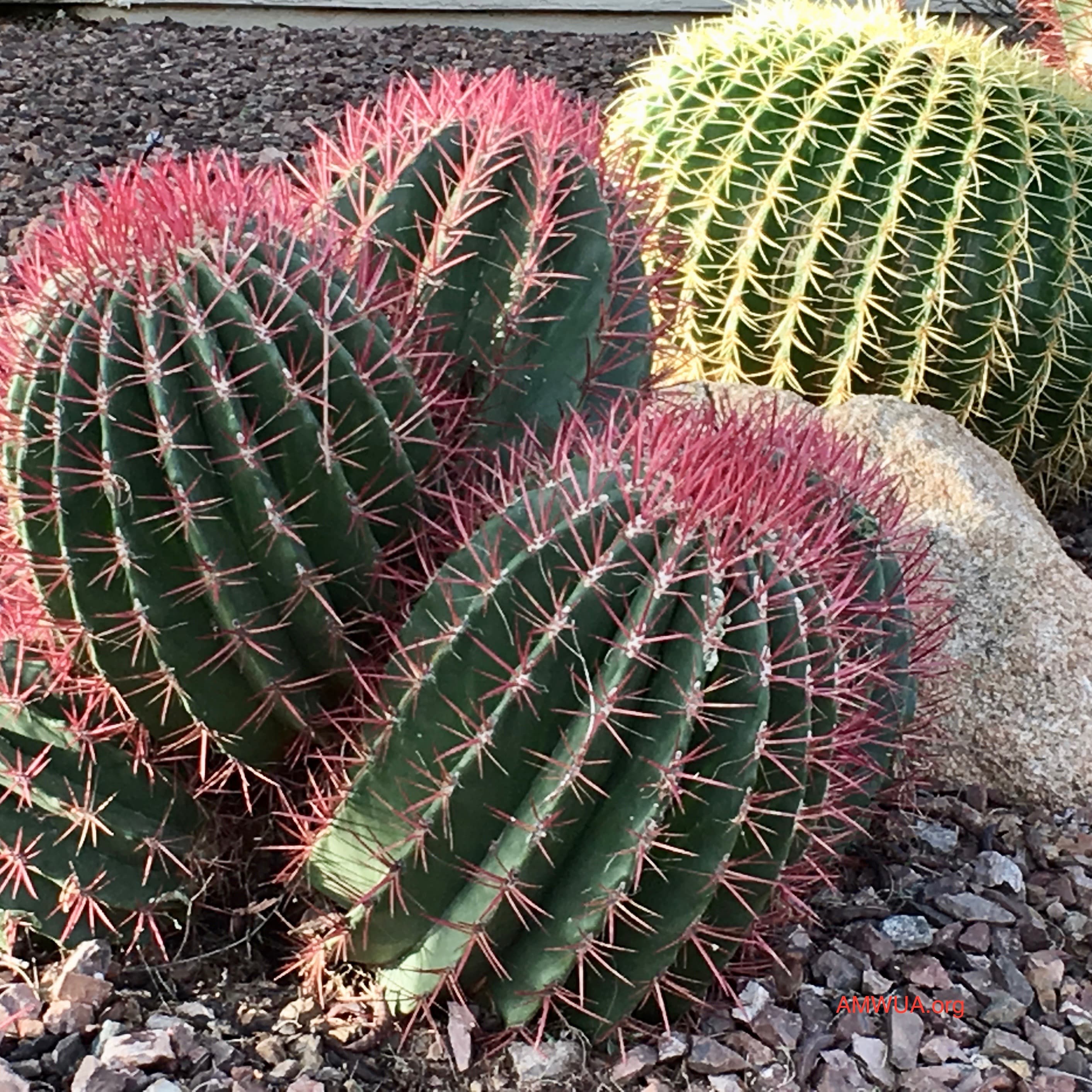AMWUA Blog
BY: Warren Tenney10 Tips For A Beautiful Low-Maintenance Landscape

It’s not unusual to sit on your patio and wish for a prettier backyard or pull into the driveway and question the curb appeal of your home. Many homeowners need and prefer a low-maintenance yard, but that can lead to a lonely cactus and a couple of shrubs in a field of gravel. The joy of many desert-adapted plants is that you can have the drama, color and texture of a professional-looking landscape with very little maintenance. Here are 10 tips to help you create a prettier yard that’s easy to care for, too.
1. Use plants with similar water needs: It’s difficult to keep a landscape healthy and water efficient if you mix plants with low, moderate and high water needs within the same irrigation zone. Something’s going to wilt from too little water or turn yellow, rot and die from too much. Select hardy desert-adapted plants that require little water and love full and partial sun. Set the irrigation system to water deeply and infrequently and every plant will thrive.
2. Color can come from anywhere: There are plenty of hardy low-maintenance, low-water-use cactus and succulents that color a landscape without trimming or raking. Brilliant yellow Golden Barrels (Echinocactus grusonii) will brighten a yard, particularly when paired with bright red Mexican Fire Barrels (Ferocactus pilosus). Consider a Purple Prickly Pear (Opuntia santa-rita) or a giant gray-blue Mescal Ceniza (Agave colorata).
3. Find the right tree: Choose trees the will grow into the space you’ve chosen and will not need excessive trimming. Look for trees that lose fewer leaves, pods and flowers to use around a pool to minimize skimming . Choose trees that lose their leaves in the winter. That means they’ll let in the desert’s lovely winter light and heat and you’ll only need to rake or blow their leaves once a year.
4. Group like plants: Avoid scattering different types of plants over a large area. Professional designers suggest grouping the same two or three types of plants into arrangements to give your landscape a planned and sculptured look. The general rule for successful groupings is something tall, something triangular and something round.
5. Consider cactus for height: You don’t have to pay for a saguaro to add height to your yard. There are many less expensive columnar cactuses that will offer the same drama. A few Senitas (Lophocereus schottii) or Mexican Fenceposts (Pachycereus marginatus) can anchor a grouping and require little or no maintenance.
6. Consider succulents instead of grasses or shrubs: Tall willowy yet tough evergreen succulents can provide the delicate look of ornamental grasses without the need to trim and water. Desert Spoon (Dasylirion wheeleri), Slipper Flower (Pedilanthus macrocarpus) Red Yucca or Red Hesperaloe (Hesperaloe parviflora) are hardy and add mid-height layer of greenery to soften a group of tall cactuses.
7. Leave the shrubs alone: Consider how high and wide a shrub will grow before planting it in your yard. Never shear desert shrubs to fit a space and never be tempted to clip into geometric shapes. The interior grows woody and the shrub grows a shell of leaves to survive. Eventually woody holes begin to show and the shrub succumbs to a slow and ugly death. Desert shrubs such as Texas Sage (Leucophyllum frutescens) or Myrtle (Myrtus communis) are beauties that want to be left alone.
8. Steal a good idea: There are plenty of everyday places – coffee shops, banks, city halls, event venues, museums and libraries - that have professionally designed landscapes. Cities also have free demonstration gardens where your can see trees, succulents and cactus at their mature sizes. Find the plants that group well together and take a photo. It’s like picking a detail from a larger painting – or stealing a good idea.
9. Consider container plants: Large clay pots filled with a hardy cactus or succulent can add color, shape and a focal point to your landscape. Avoid pots with a shiny glaze. These pots show dirt and will need to be sprayed or wiped down often. Container plants can be grouped near a front porch or back patio or lined up under the eaves of your home to catch water when it rains.
10. Go with a plan: Here’s a New Year’s resolution for you: create a low-maintenance improvement plan for your yard long before you hit the nursery this spring. Nurseries are beautiful and carry a wide variety of plants. All those beautiful plants look great on your Instagram feed, but not all of them belong in a low-maintenance yard. It’s easy to buy impulsively. Do your homework, know the plants you want to group in your landscape and take a list with you. Have a few alternatives to avoid running from nursery to nursery.
The best place to start your planning is the AMWUA landscape and garden guides where you can find details about more than 200 trees and plants and how to design like a professional.
For 48 years, Arizona Municipal Water Users Association has worked to protect our member cities’ ability to provide assured, safe and sustainable water supplies to their communities. For more water information visit www.amwua.org .
